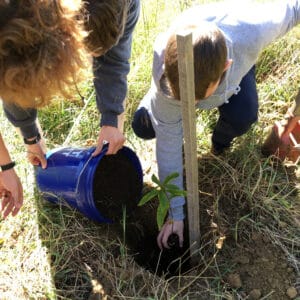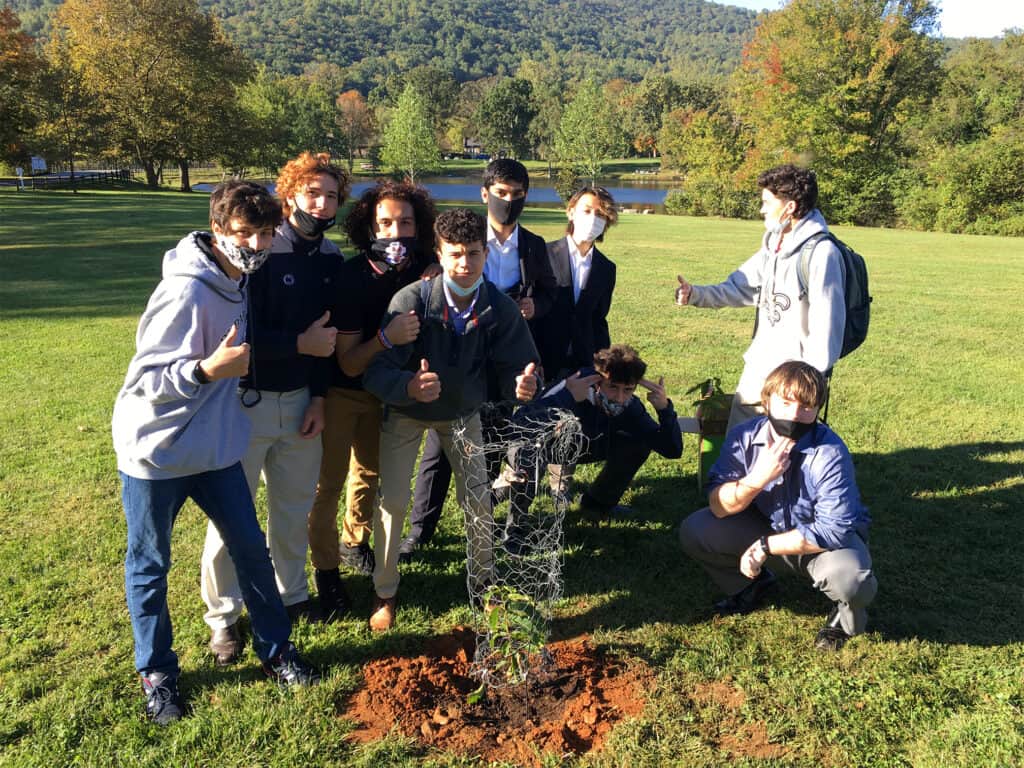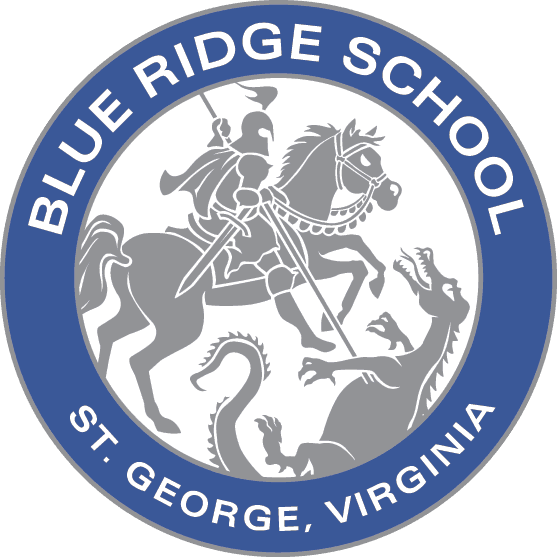
The Blue Ridge Mountains are known for their ecological diversity and every fall the various tree species take centerstage as leaves change from green into bright reds, oranges, yellows. Our mountains are dominated by oaks, hickories, maples, and Tulip trees. But, prior to the 20th Century, the American Chestnut would have surely been included in that list. By some estimates this tree, which grew over 100 feet tall and sometimes over 10 feet in diameter, constituted 20% of the forest canopy. An airborne fungus, or blight, was unintentionally introduced to eastern North America in the early 1900s. This blight causes layers of the chestnut tree’s bark to separate and compromises the flow of vital nutrients. Within a generation nearly every American Chestnut in Appalachia was dead. Life in the mountains was forever changed; from the reliable source of sturdy lumber that was used for every conceivable purpose by mountain families to the abundant chestnuts that were a valuable food source to wildlife. Yet, reminders of the tree’s dominance still remain – shrubby trees often sprout from the ancient root systems of American chestnuts in secluded parts of mountains until they are ultimately left dry and broken by the ever-present blight.
For many years state forestry departments and private organizations have been working to breed blight-resistance into surviving generations of American chestnuts. Over the past nine years small groups of Blue Ridge School students have been able to lend a hand in various projects with the Virginia Chapter of the American Chestnut Foundation. Students have visited the Foundation’s local orchards to help plant seeds, measure saplings, and even to cut down and remove trees that do not fulfill the growth and health requirements. Each year spiny burs that protect maturing seeds are harvested and BRS students help to remove and sort the seeds for winter storage before they can be planted in the spring.
This fall the school was gifted four ceremonial chestnut trees in recognition for the work our students have done for the Virginia Chapter of the American Chestnut Foundation. These specific specimens have a genetic blend of 15/16 American chestnut (to give it the fast and tall growing characteristics of the native variety) and 1/16 Chinese chestnut (to provide blight resistance). Students planted the seedlings after the annual de-burring and seed-sorting was complete. These seedlings exemplify the culmination of research efforts to reintroduce a blight-resistant chestnut tree to the Appalachian Mountains.
by Cory Woods, Director for Environmental Resources




